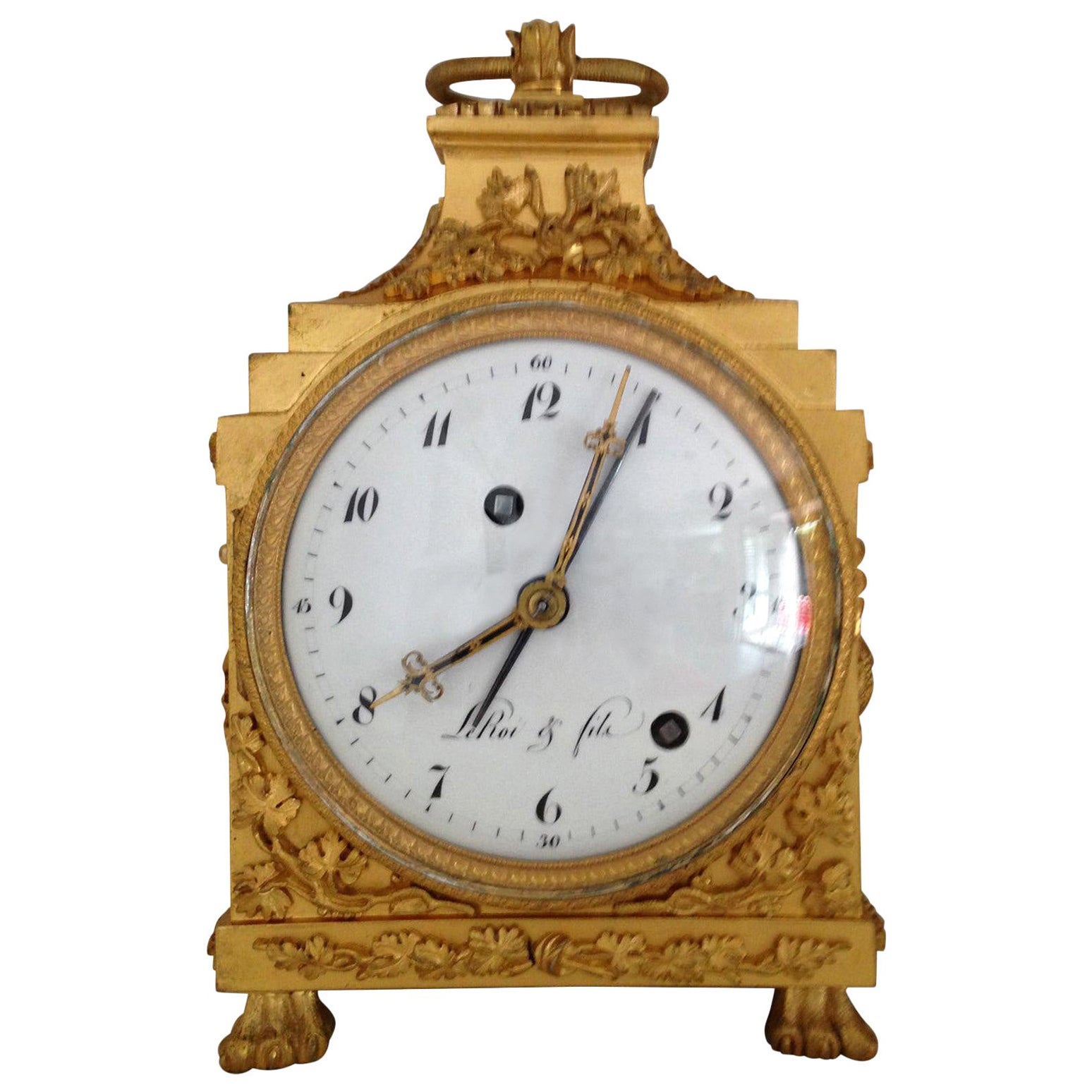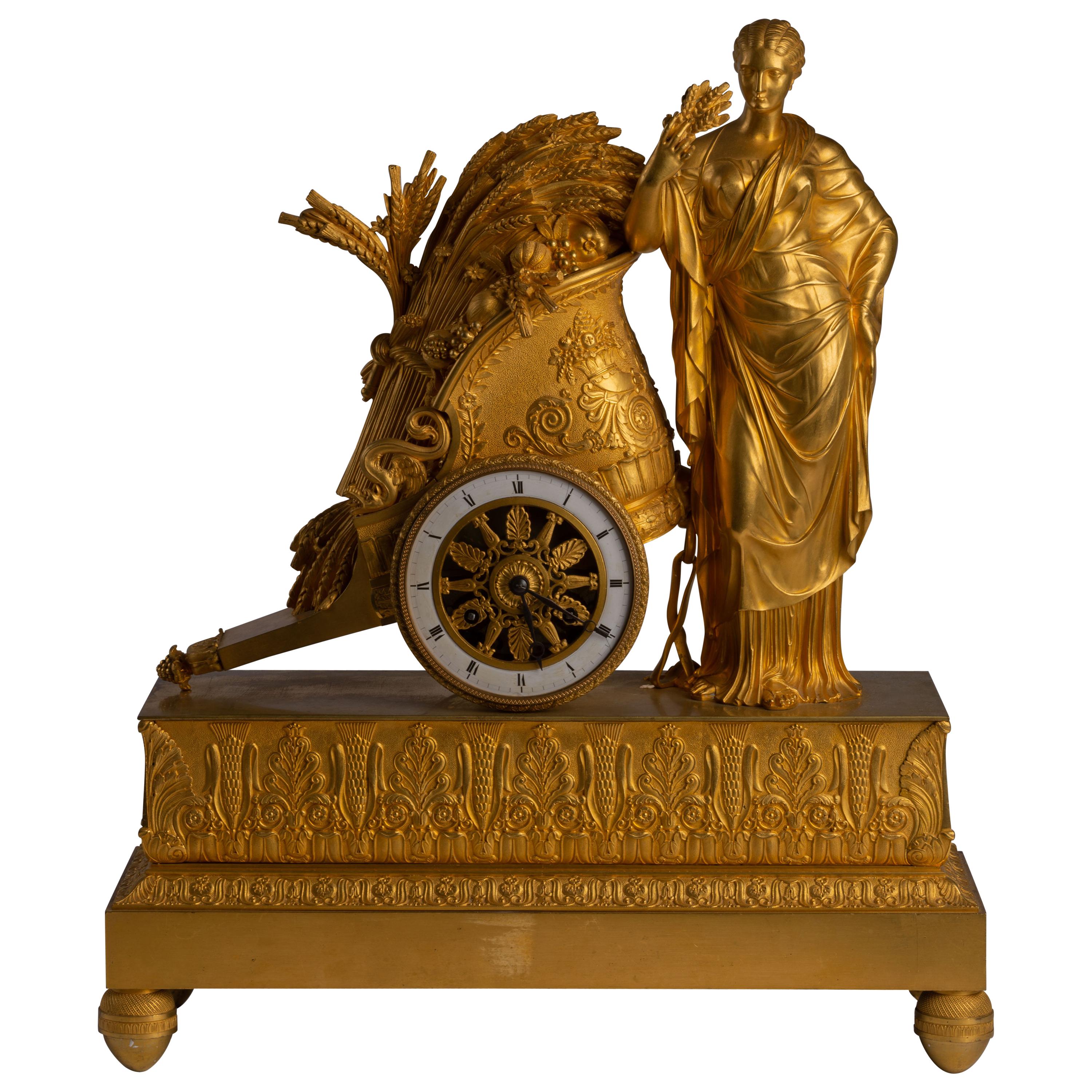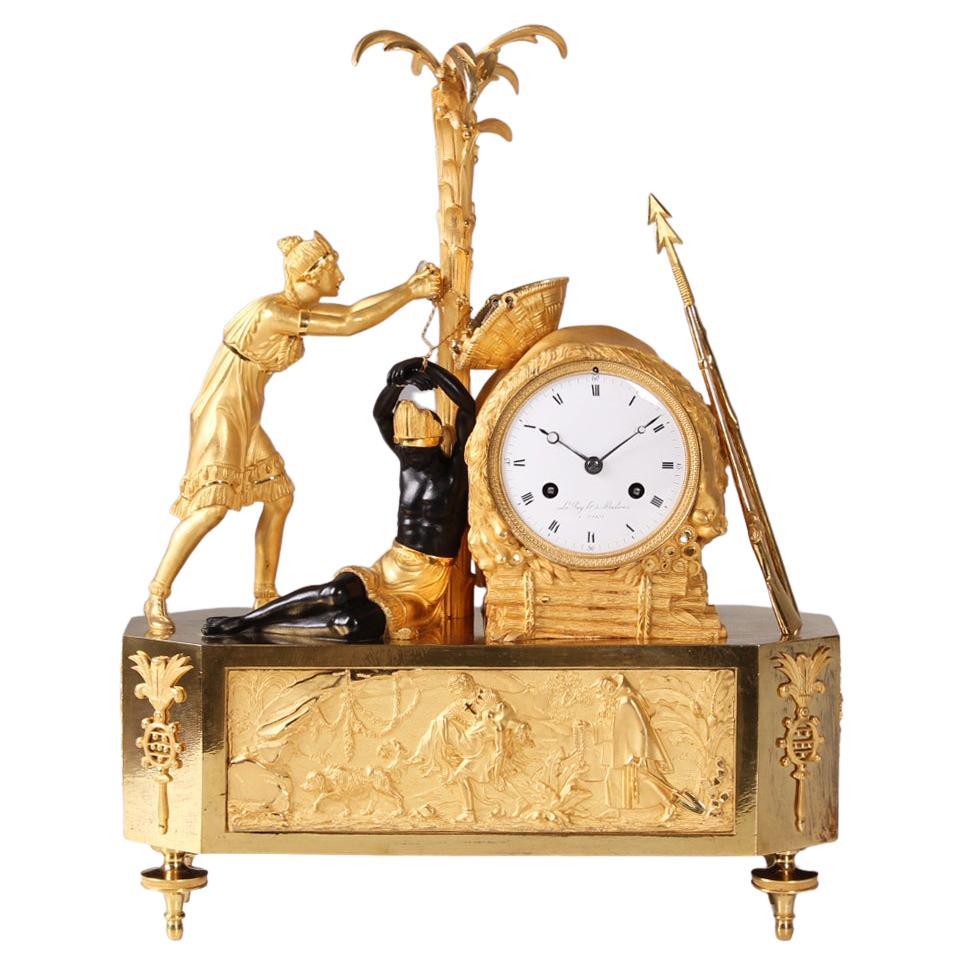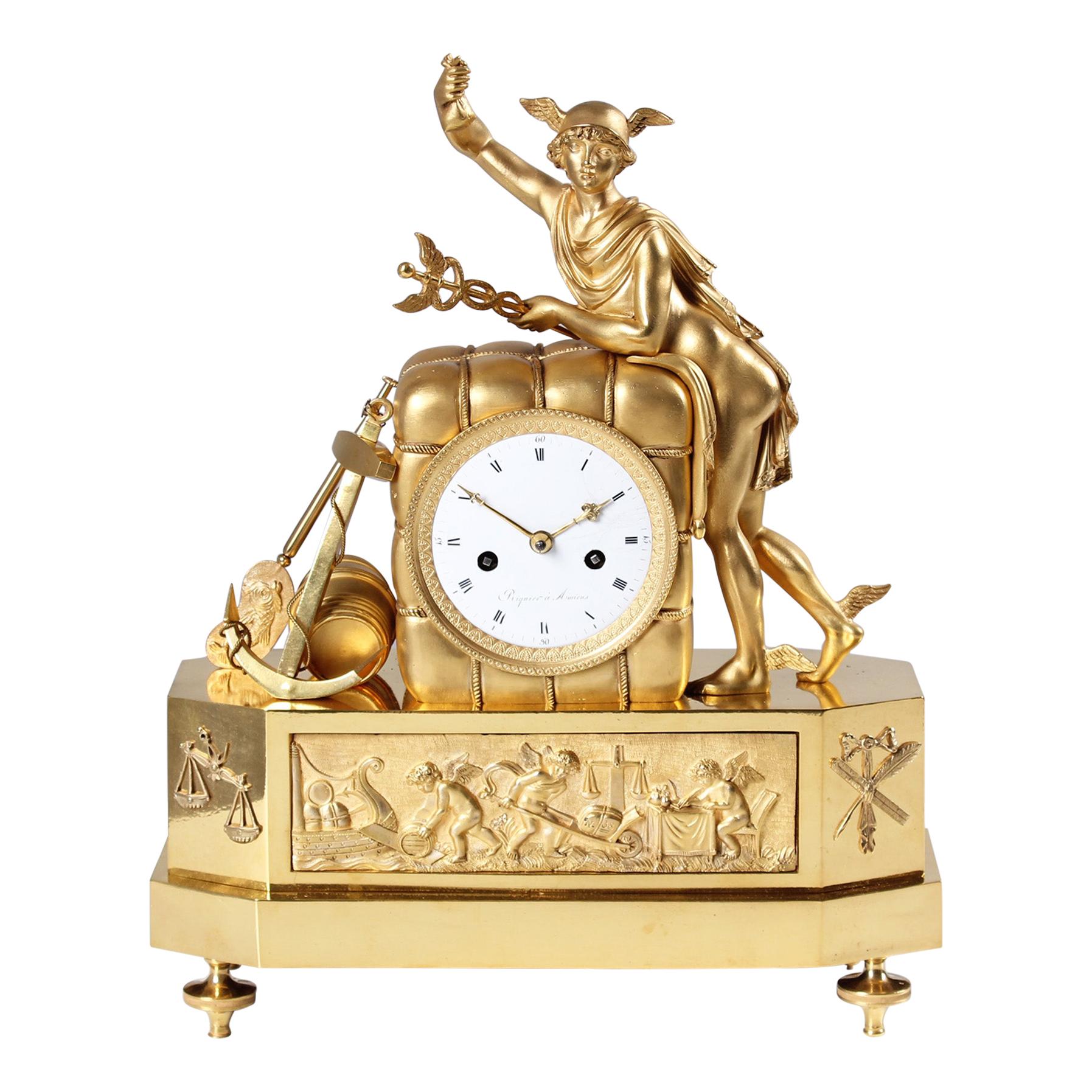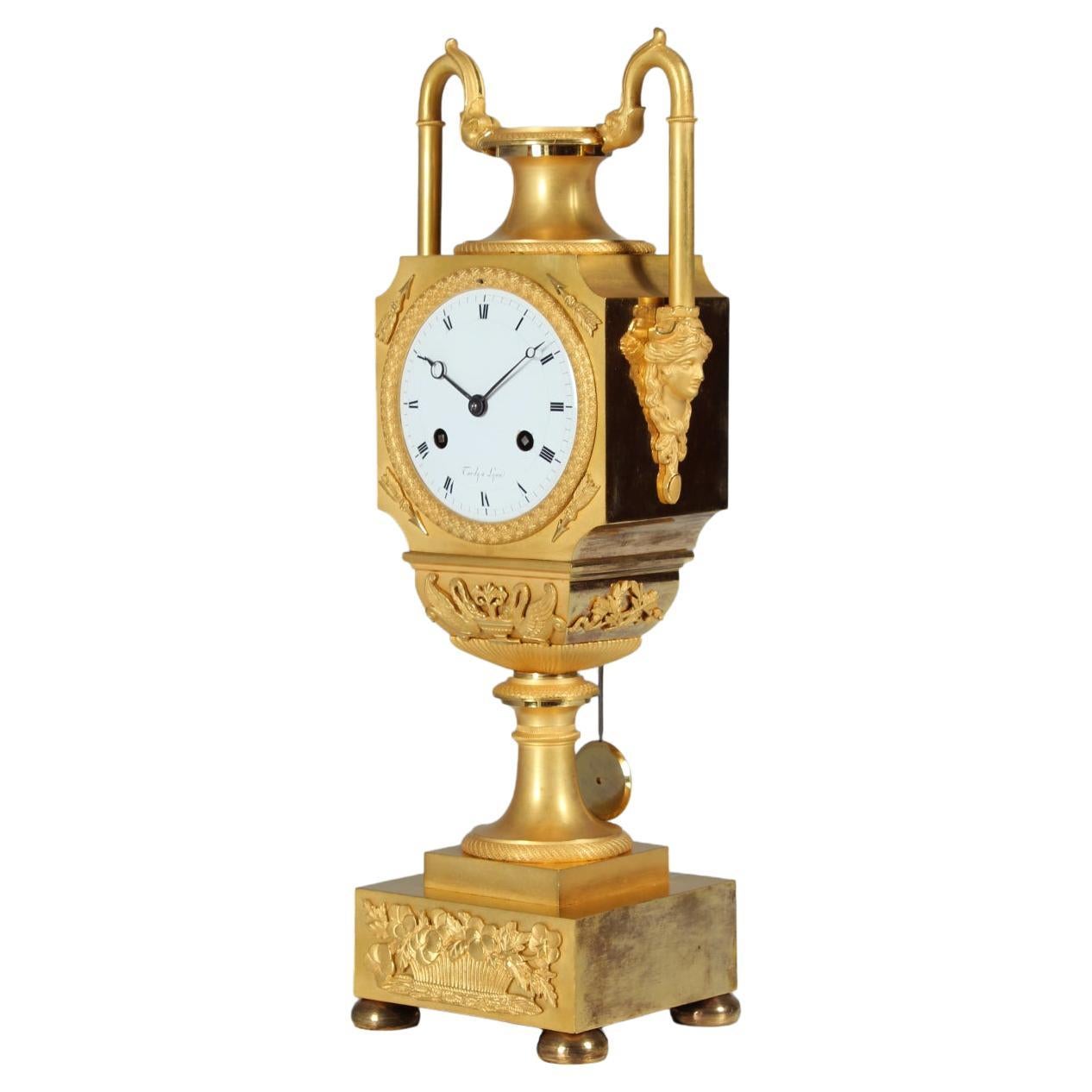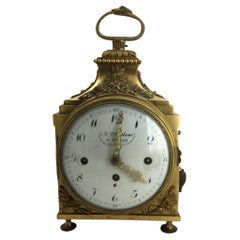
Swiss Ormolu 'Pendule d'officier' by Meuron & Compagnie, circa 1810
View Similar Items
1 of 3
Swiss Ormolu 'Pendule d'officier' by Meuron & Compagnie, circa 1810
About the Item
- Creator:Meuron & Compagnie (Maker)
- Dimensions:Height: 9.85 in (25 cm)Width: 4.73 in (12 cm)Depth: 2.76 in (7 cm)
- Style:Empire (Of the Period)
- Materials and Techniques:
- Place of Origin:
- Period:
- Date of Manufacture:circa 1810
- Condition:
- Seller Location:Amsterdam, NL
- Reference Number:1stDibs: LU99455214163
You May Also Like
- Louis XVI Ormolu Carriage Clock, Pendule d'Officier, Late 18th CenturyLocated in Spencertown, NYSigned on dial "Jn Pre Calame A PARIS" with later key. Movement not guaranteed.Category
Antique Late 18th Century French Louis XVI Carriage Clocks and Travel Cl...
MaterialsOrmolu
- French Grande Sonnerie Pendule D'officier Alarm Clock, Le Roi, 18th CenturyBy Le RoiLocated in Melbourne, VictoriaA fine French ormolu grande sonnerie pendule d'officier with alarm, Le Roi & Fils, late 18th century. The ormolu case profusely decorated with flora...Category
Antique Late 18th Century French Carriage Clocks and Travel Clocks
MaterialsOrmolu
- Ormolu Mantel Clock, Belgium, circa 1810-1820Located in Belmont, MAEmpire ormolu mantel clock, Belgium, circa 1810, Signed "J.B. Romaet a Gand". Decorated with a shepherd scene. Strikes the hour and half hour on a bell. With enamel clock face and si...Category
Antique 1810s Belgian Empire Mantel Clocks
MaterialsOrmolu
- Empire Ormolu Mantel Clock 'Pendule au char'Located in Kittery Point, METhe rectangular base decorated with a wheat and foliate frieze and raised on four ball feet, the goddess of agriculture Ceres standing while leaning against a Roman chariot with harv...Category
Antique Early 19th Century French Empire Mantel Clocks
MaterialsBronze
- Fine 19th century French ormolu mantel clock (pendule) by Leroy a Paris, c. 1825By LeRoyLocated in Oxfordshire, United KingdomA most beautiful French ornolu mantel clock by Leroy à Paris A lovely French late Empire/early Charles X mantel clock with an ormolu case, c. 1825. The ormolu brass case depicts a celebration of Science and Learning. It is dominated by a rectangular superstructure containing the movement, flanked by an engine-turned column with a celestial globe on top on the left and an elegant lady reading a book on the right. The superstructure is surmounted by a bookcase and a bust of Socrates...Category
Antique Early 19th Century French Empire Mantel Clocks
MaterialsBrass, Ormolu
- Early 19th Century Ormolu Mantel Clock, Atala freeing Chactas, Paris, circa 1810Located in Greven, DEMantel Clock "Atala and Chactas" Paris Bronze (fire-gilt and patinated), enamel Empire around 1810 Dimensions: H x W x D: 40 x 32 x 11 cm Description: Very rare and extremely high quality French mantel clock, so-called Pendule Au Bon Sauvage. Depicted are scenes from the love story "Atala or the love of two savages in the desert" written by Francois René Vicomte de Chateaubriand in 1801. At the beginning of the 19th century, this was probably the most famous love story in Europe, but today it has been forgotten. The story, set in present-day Louisiana (USA), is roughly rewritten about the forbidden love between Chactas, a young Indian, and Atala, the beautiful daughter of a Spaniard. Chactas is captured in a battle between two Indian tribes, chained to a palm tree and is to be sacrificed. Atala wants to save his life and convert him to Christianity. She unties him from the palm tree at night and they flee together into the wilderness of North America. Their love for each other grows stronger and stronger and they have prospects for a future together. The story takes a tragic turn when Atala, who must remain a virgin due to a vow made by her mother, can no longer withstand the conflict of her feelings and commits suicide. The main group of characters thus shows Chacta's liberation through Atala. Atala is leaning against a pile of logs. The animal fur thrown over the logs and the weapons leaning against the stack on the right give the impression of a night camp. The bronze is of rarely beautiful quality, finely chiselled and makes the scene appear very lively. The contrast of fire-gilded and patinated bronze adds tension to the composition. In the base we see the Entombment as the end of the tragic love story. This bronze work is also very detailed, the interplay of bright and matt gilding makes the flat relief appear much deeper than it is. The depiction of the mantel clock presented here shows that the exotic was only known from stories and that the bronzier had his own ideas about the appearance of this distant world. The Indian, for example, has very European facial features and his skin was not black in reality, of course. The palm tree was also certainly not found in the North American wilderness. The heart of the clock is a French pendulum movement, integrated into the wooden pile, with an eight-day power reserve and a lock plate striking a bell on the half and full hour. The pendulum is suspended on a thread, typical of the period. The classically shaped hands, so-called Breguet hands, are also typical of the time. The enamelled dial has black Roman hour numerals, Arabic quarter hours and bears the signature: Le Roy hr. de Madame A PARIS. Interesting facts: The period from 1795 to about 1815 saw the creation of probably the most spectacular group of bronzes: The "Au bon Sauvage" pendulums - depictions of the "Noble Savage". Today's viewers react to these objects with both fascination and irritation. Enthusiastic on the one hand about the obvious quality of the detailed bronzes and the allure of the exotic, on the other hand distanced and cautious because of the possible discrimination that is suspected behind them. The ambivalence of this feeling motivates the search for the conditions of origin of these pendulums. Europeans found their new ideal of the natural man primarily in fictional and realistic travelogues about the Indians of North America...Category
Antique Early 19th Century French Empire Mantel Clocks
MaterialsOrmolu

